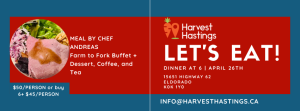The Victoria Land and Water Stewardship Council, Ontario Anglers and Hunters and the Ontario Ministry of Natural Resources have prepared a well illustrated manual showing crop damage by wildlife and livestock predation. The report can be downloaded below.
IntroductionPublic wildlife resources are highly valued by Ontario citizens. Recreational use and enjoyment of wildlife alone generates close to $3 billion in sustainable economic benefits annually, including the creation of some 48,000 person years of employment. At the same time public wildlife can and does come into conflict with private agricultural production.
Wildlife damage to agricultural crops is estimated by the Ontario Soil & Crop Improvement Association (OSCIA) to cost farmers approximately $41 million in crop and livestock losses annually. Livestock depredation claims to the Ontario Ministry of Agriculture, Food and Rural Affairs (OMAFRA), have been increasing steadily. In the fiscal year 2010-2011, OMAFRA payments totalled $1.56 million for livestock, poultry and honey bee losses. The direct cost of wildlife damage to producers is small compared to indirect costs, which include an estimated $7.5 million in annual abatement expenses (e.g. fencing, deterrents, livestock guard animals, etc.) as well as increased management and labor cost, and stress.
Balancing the relationship between stewardship and conservation of public wildlife resources and reducing conflicts with agricultural production depends on accurate identification of wildlife damage. With that in mind, this manual has been created by the Ontario Federation of Anglers and Hunters and the Victoria Stewardship Council to assist Ontario producers, landowners, hunters and others in identifying the probable causes of agricultural damage.
Wildlife Crop Damage – A Perspective on Species
In its comprehensive assessment of provincial wildlife damage to crops, OSCIA determined that raccoons accounted for most damage to corn—more than 50%. White-tailed deer and geese caused 40-50% of the damage to forages and wheat, and deer caused 45% of soybean damage attributed to wildlife.
Similarly, an intensive survey of species use and crop depredation by Purdue University found that raccoons and white-tailed deer caused 95% of damage in surveyed crop fields; squirrels, groundhogs, crows and other species inflicted the remaining damage. Although wild turkeys were believed by many producers to cause damage (because they are so often observed in fields in daylight) the Purdue University study concluded that wild turkeys were not responsible for any significant crop damage.
Wildlife Crop Damage – Social Valuation & Tolerance
Where wildlife damage is concentrated by a combination of high numbers, timing, and habitat, some producers experience more significant losses than most. Some ifarms experience significant damage only occasionally, while the frequency of extensive damage on other sites can be expected annually.
OSCIA (2000) found that 90% of Ontario field crop producers reported some loss due to wildlife damage; 28% considered the losses significant. OSCIA also learned that producer tolerance of damage depends very much on the species involved—damage by socially valued & managed species such as white-tailed deer is tolerated more than damage by hunted but overabundant species such as Canada geese, which in turn are tolerated more than unmanaged species such as blackbirds.
Crop Damage: Other Natural Causes
Wildlife damage is often a localized impact, especially when compared to the damage that weather events and other natural phenomena or factors can inflict. On pages 22 and 23 of this manual, brief descriptions of nonwildlife crop losses and damage are included—things like wind, rain storms, insects, equipment failure, and flooding, to name a few.

Let’s Eat! April 26th at 6!
Come out for a celebration of local foods, friendship, and community. The annual “Let’s Eat!” dinner will be catered once again by

